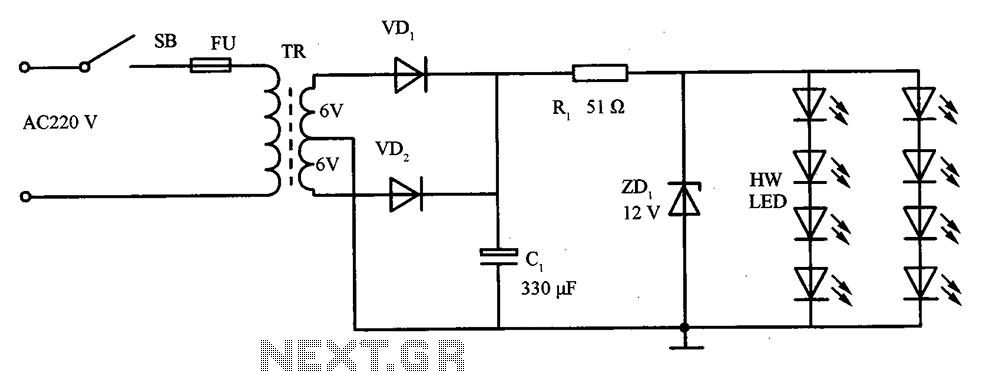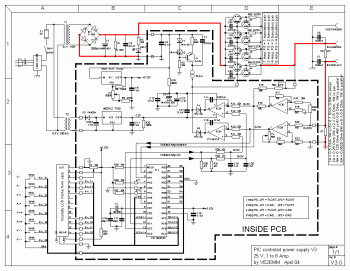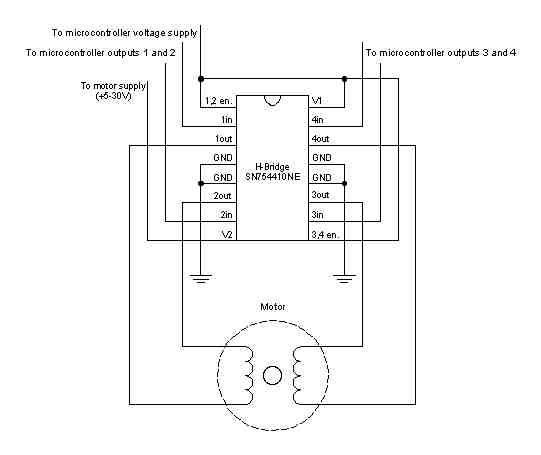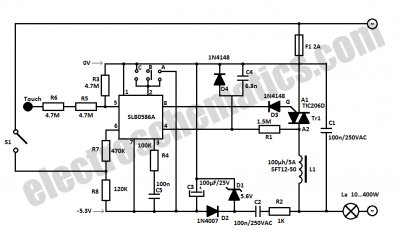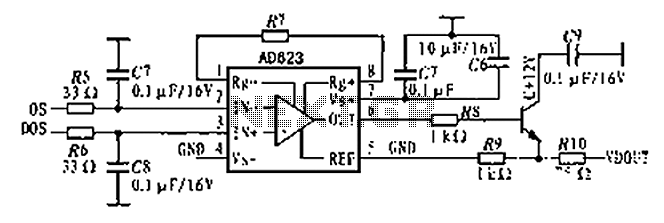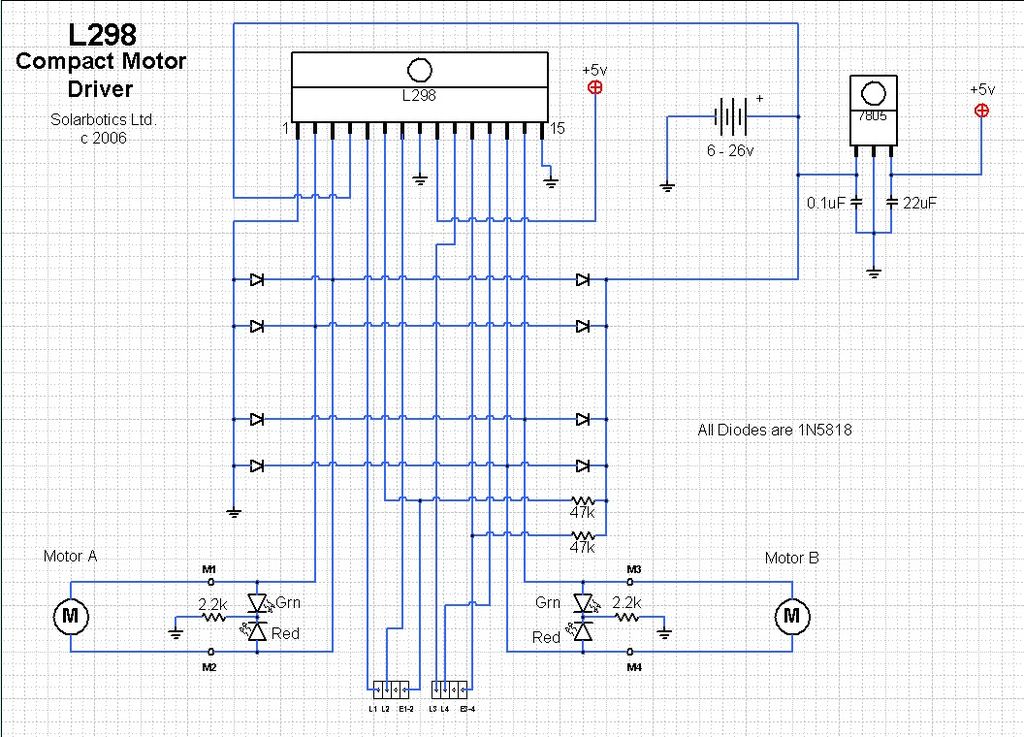
PPMC and stepping motor driver IC dedicated connection circuit
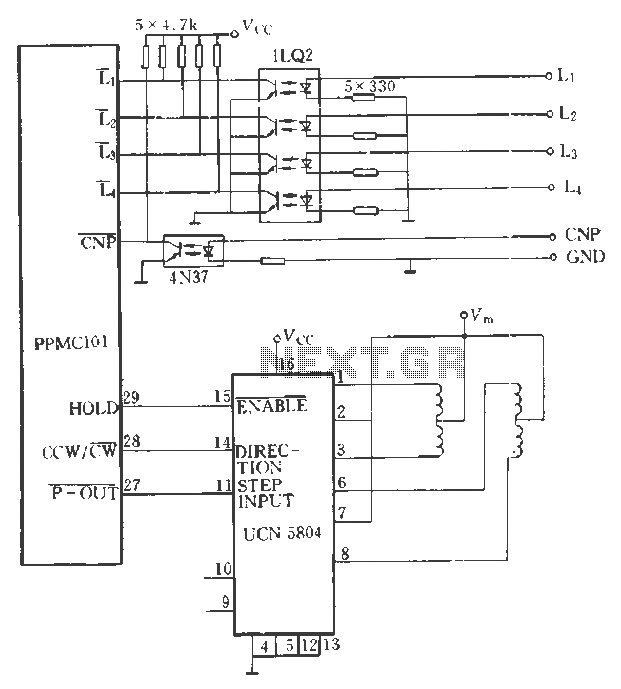
The PPMC external UChl 5804 demonstrates a four-phase stepping motor drive integrated circuit (IC) that is depicted in a downward motion. It utilizes the P-OUT, counterclockwise (ccw) / clockwise (cw), and HOLD outputs. The UCN5804 pins 9 and 10 can be configured for a two-phase motor tuning step, single-phase full-step, half-step, and other operational modes in three distinct configurations. The accompanying figure illustrates the optocoupler connection linking five limit switches to the PPMC.
The PPMC external UChl 5804 is designed to control a four-phase stepping motor through a series of outputs that facilitate various operational modes. The P-OUT output serves as the primary control signal for the motor, while the ccw and cw outputs determine the rotational direction of the motor. The HOLD output is utilized to maintain the motor's position when not actively stepping, reducing power consumption and preventing unwanted movement.
The UCN5804 integrated circuit is a versatile component that supports multiple configurations for motor operation. By employing pins 9 and 10, the circuit can be adjusted to operate in a two-phase tuning step mode, which allows for finer control of the motor's position and speed. Additionally, the IC can be configured for single-phase full-step and half-step modes, providing flexibility in the motor's performance based on the application's requirements.
The schematic includes an optocoupler connection to five limit switches, which are critical for ensuring that the motor does not exceed its designated range of motion. The limit switches provide feedback to the control system, enabling it to stop the motor when it reaches a predefined position. This integration enhances the safety and reliability of the system, preventing damage to the motor and associated components.
Overall, the PPMC external UChl 5804 and its associated circuitry represent a sophisticated approach to controlling stepping motors, offering a range of operational modes and safety features that are essential for precise motor control in various applications.PPMC external UChl 5804 shows four-phase stepping motor drive IC is shown moving down. It uses the P-OUT, ccw / cw and HOLD output. Use UCN5804 9 and 10 pin logic level can be set up as a two-phase motor tuning step, single-phase full-step, half-step and other incentives in three different sports. In this figure, it was shown by the optocoupler connection between the five limit switches and PPMC.
The PPMC external UChl 5804 is designed to control a four-phase stepping motor through a series of outputs that facilitate various operational modes. The P-OUT output serves as the primary control signal for the motor, while the ccw and cw outputs determine the rotational direction of the motor. The HOLD output is utilized to maintain the motor's position when not actively stepping, reducing power consumption and preventing unwanted movement.
The UCN5804 integrated circuit is a versatile component that supports multiple configurations for motor operation. By employing pins 9 and 10, the circuit can be adjusted to operate in a two-phase tuning step mode, which allows for finer control of the motor's position and speed. Additionally, the IC can be configured for single-phase full-step and half-step modes, providing flexibility in the motor's performance based on the application's requirements.
The schematic includes an optocoupler connection to five limit switches, which are critical for ensuring that the motor does not exceed its designated range of motion. The limit switches provide feedback to the control system, enabling it to stop the motor when it reaches a predefined position. This integration enhances the safety and reliability of the system, preventing damage to the motor and associated components.
Overall, the PPMC external UChl 5804 and its associated circuitry represent a sophisticated approach to controlling stepping motors, offering a range of operational modes and safety features that are essential for precise motor control in various applications.PPMC external UChl 5804 shows four-phase stepping motor drive IC is shown moving down. It uses the P-OUT, ccw / cw and HOLD output. Use UCN5804 9 and 10 pin logic level can be set up as a two-phase motor tuning step, single-phase full-step, half-step and other incentives in three different sports. In this figure, it was shown by the optocoupler connection between the five limit switches and PPMC.
